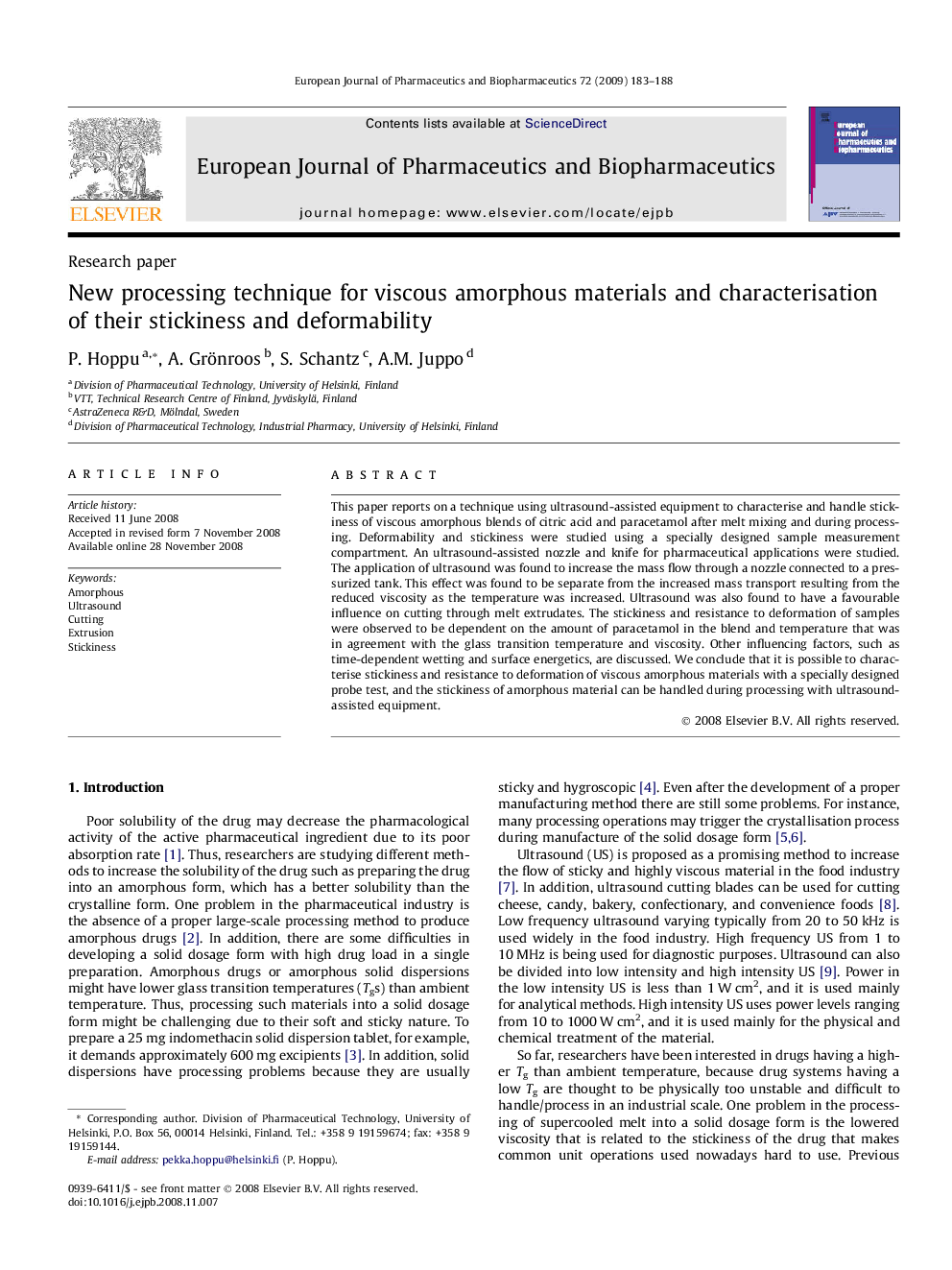| Article ID | Journal | Published Year | Pages | File Type |
|---|---|---|---|---|
| 2084358 | European Journal of Pharmaceutics and Biopharmaceutics | 2009 | 6 Pages |
Abstract
This paper reports on a technique using ultrasound-assisted equipment to characterise and handle stickiness of viscous amorphous blends of citric acid and paracetamol after melt mixing and during processing. Deformability and stickiness were studied using a specially designed sample measurement compartment. An ultrasound-assisted nozzle and knife for pharmaceutical applications were studied. The application of ultrasound was found to increase the mass flow through a nozzle connected to a pressurized tank. This effect was found to be separate from the increased mass transport resulting from the reduced viscosity as the temperature was increased. Ultrasound was also found to have a favourable influence on cutting through melt extrudates. The stickiness and resistance to deformation of samples were observed to be dependent on the amount of paracetamol in the blend and temperature that was in agreement with the glass transition temperature and viscosity. Other influencing factors, such as time-dependent wetting and surface energetics, are discussed. We conclude that it is possible to characterise stickiness and resistance to deformation of viscous amorphous materials with a specially designed probe test, and the stickiness of amorphous material can be handled during processing with ultrasound-assisted equipment.
Related Topics
Life Sciences
Biochemistry, Genetics and Molecular Biology
Biotechnology
Authors
P. Hoppu, A. Grönroos, S. Schantz, A.M. Juppo,
